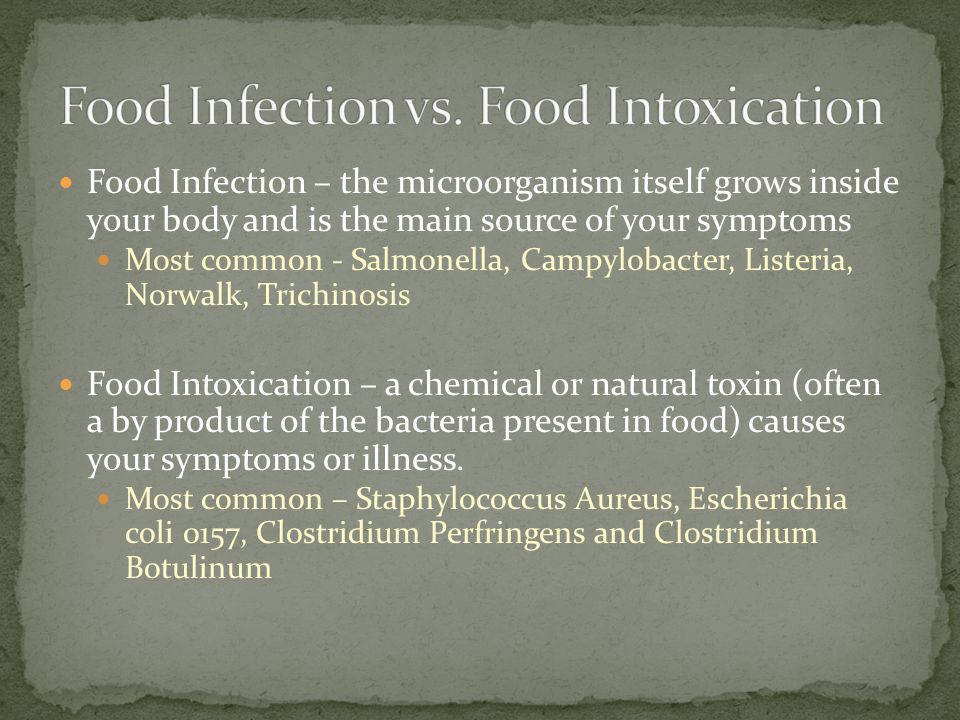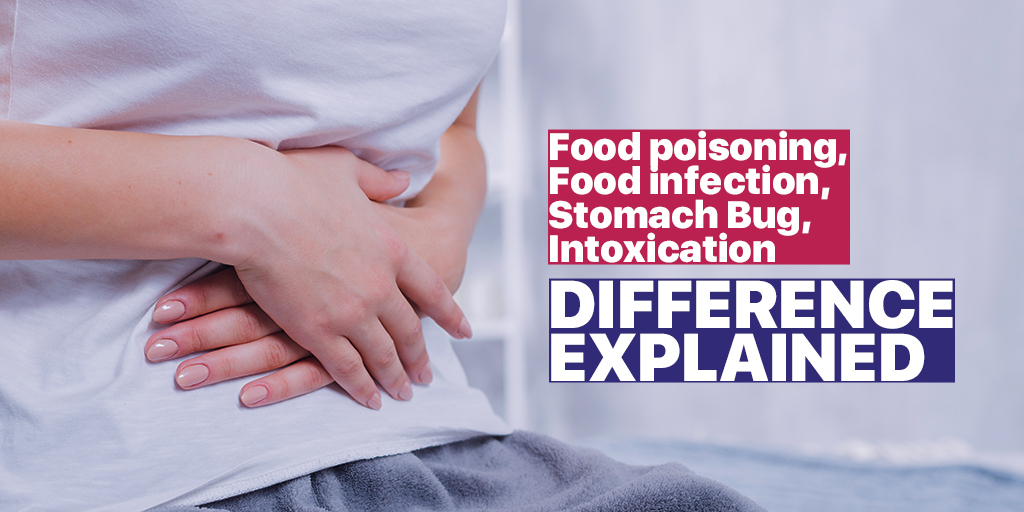There are two types of food poisoning, bacterial and viral. Bacterial food poisoning is caused by eating contaminated food. Viral food poisoning is caused by eating food that has been in contact with a virus.
Food intoxication is a type of food poisoning that is caused by consuming poisonous plants or animals.
No one wants to experience food poisoning or food intoxication, but unfortunately, these conditions are all too common. Both food poisoning and food intoxication can occur when you eat contaminated food or drink contaminated water. Symptoms of food poisoning include nausea, vomiting, diarrhea, abdominal pain, and fever.
Symptoms of food intoxication include dizziness, headache, and lethargy. If you experience any of these symptoms after eating or drinking, it’s important to seek medical attention immediately.
Table of Contents
Infection and Intoxication
What is the Difference between Food Poisoning And Food Intoxication?
The terms “food poisoning” and “food intoxication” are often used interchangeably, but there is a difference between the two. Food poisoning is caused by consuming food that contains harmful bacteria, viruses, or toxins. Food intoxication, on the other hand, occurs when you consume food that has been contaminated with chemicals or other substances that can make you sick.
Symptoms of food poisoning can vary depending on the type of bacteria or toxin involved. However, common symptoms include nausea, vomiting, diarrhea, and abdominal cramps. These symptoms usually develop within hours of eating contaminated food.
In some cases, however, symptoms may not appear for days or even weeks after exposure.
Food intoxication typically causes more mild symptoms than food poisoning. The most common symptom of food intoxication is gastrointestinal upset, which can include nausea, vomiting, and diarrhea.
Headache and dizziness are also common. Symptoms usually develop within minutes to hours after eating contaminated food.
What are Examples of Food Intoxication?
There are many examples of food intoxication, but the most common ones are generally caused by bacteria or viruses. Some common bacterial infections that can cause food intoxication include salmonella, E. coli, and listeria. Viral infections that can lead to food poisoning include norovirus, rotavirus, and hepatitis A. These types of infections can often be contracted by consuming contaminated food or water, or by coming into contact with someone who is infected.
Food intoxication can also be caused by chemicals or toxins that may be present in food or drink. For example, botulism is a potentially fatal form of food poisoning caused by a toxin produced by the bacterium Clostridium botulinum. This toxin can cause paralysis and even death if ingested in large enough quantities.
Other examples of chemical toxins that can contaminate food include pesticides, herbicides, and heavy metals such as lead and mercury.
What is the First Symptom of Food Intoxication?
Food intoxication is a condition that results from eating contaminated food. The first symptom of food intoxication is typically vomiting, followed by diarrhea, abdominal cramps, and fever. In severe cases, food intoxication can lead to death.
How Long Does Food Intoxication Last?
Food intoxication, also called food poisoning, is a condition that can occur when you eat contaminated food. The symptoms of food intoxication can range from mild to severe, and typically last for a few hours to several days. In most cases, food intoxication is not serious and will resolve on its own without treatment.
However, in some cases, it can lead to dehydration or even death. If you experience any of the following symptoms after eating contaminated food, seek medical attention immediately:
-severe abdominal pain
-vomiting
-diarrhea
-high fever
-headache
-muscle aches
Symptoms of food intoxication typically begin within two hours to four days after consuming contaminated food.
For most people, the symptoms last for one to three days before resolving on their own. However, some people may experience longer lasting effects depending on the severity of their illness. Treatment for food intoxication generally focuses on relieving symptoms and preventing dehydration.
If you have severe vomiting or diarrhea, you may need fluids through an IV to prevent dehydration. In rare cases, hospitalization may be necessary if your condition is life threatening.

Credit: slideplayer.com
Difference between Food Poisoning And Food Infection Ppt
There are many different types of food poisoning and food infection, but there are some key differences between the two. Food poisoning is typically caused by bacteria or toxins in food that can cause vomiting, diarrhea, and other symptoms. Food infection, on the other hand, is usually caused by viruses or parasites that infect the gastrointestinal tract and cause similar symptoms.
In both cases, people typically recover within a few days without any long-term effects. However, severe cases of either food poisoning or food infection can lead to serious complications like dehydration, organ damage, and even death. It’s important to be able to distinguish between the two so that you can get proper treatment if you think you may have either one.
Food Intoxication Ppt
Food intoxication is a condition that can occur when you eat contaminated food. The most common type of food intoxication is caused by bacteria, but it can also be caused by viruses, toxins, or chemicals. Symptoms of food intoxication include nausea, vomiting, diarrhea, and abdominal cramps.
In severe cases, food intoxication can lead to dehydration and even death.
There are several ways to prevent food intoxication. First, make sure you wash your hands thoroughly before handling any food.
Second, cook all foods thoroughly to kill any bacteria or other contaminants. Finally, avoid eating raw or undercooked meat and poultry. If you do develop symptoms of food intoxication, see your doctor right away for treatment.
What is the Difference between Food Poisoning And Food Intoxication Quizlet
When it comes to food, there are two main types of contaminants that can make you sick: bacteria and toxins. Both can cause what is commonly referred to as “food poisoning.” However, there is a key difference between the two.
Bacteria are living organisms that can be found in contaminated food. When ingested, these bacteria can multiply and release toxins that cause vomiting and diarrhea. In severe cases, food poisoning can lead to death.
Toxins, on the other hand, are poisonous substances produced by certain bacteria. These toxins cannot be destroyed by cooking or other means of food preparation. Toxins are the primary cause of seafood-related illnesses such as shellfish poisoning.
In most cases, symptoms of food intoxication appear within minutes or hours after eating contaminated food.
Food Intoxication Vs Food Infection Symptoms
When it comes to food, there are two types of problems that can occur- intoxication and infection. Both can cause serious illness, but they are different in a few key ways. Here is a closer look at the symptoms of each so you can better understand the difference:
Food Intoxication Symptoms:
• Nausea and vomiting
• Diarrhea
• Abdominal pain and cramping
• Headache
• Fever
These symptoms typically begin within a few hours after eating contaminated food. They usually last for only a day or two and resolve on their own. In some cases, however, hospitalization may be necessary if dehydration occurs.
Food intoxication is caused by consuming food that contains toxins or other harmful substances. This can happen when food is improperly cooked or stored, or if it has been contaminated with bacteria, viruses, or chemicals. While anyone can get sick from food intoxication, those with weak immune systems (such as young children and the elderly) are more vulnerable.
Treatment typically involves drinking plenty of fluids to stay hydrated and letting the illness run its course. If vomiting persists for more than 24 hours or diarrhea is severe, medical attention may be needed.
Food Infection Symptoms:
• Nausea
• Vomiting
• Diarrhea
• Abdominal pain/cramping
• Fever
• Body aches
• Chills
These symptoms usually start gradually, anywhere from 6-72 hours after consuming contaminated food. They tend to last longer than intoxication symptoms- up to several weeks- and often require antibiotics to clear up the infection completely . Food infections are caused by consuming food that contains harmful bacteria or parasites . This can happen when meat isn’t cooked properly , fruits and vegetables aren’t washed thoroughly , or hands aren’t clean during food preparation . Anyone can get a food infection , but those with weakened immune systems ( such as pregnant women , young children , and the elderly ) are at greater risk . Treatment typically involves taking antibiotics prescribed by your doctor . You may also need to drink plenty of fluids to prevent dehydration . In severe cases , hospitalization may be necessary .
Example of Food Infection
There are many different types of food infection, but one of the most common is salmonella. This bacteria is usually found in poultry, eggs, and meat that has not been cooked properly. Symptoms of salmonella include diarrhea, vomiting, and abdominal cramps.
If you suspect you have a food infection, it is important to see a doctor immediately as it can be very serious.
Food Intoxication Examples
Food intoxication is a medical condition that results from eating contaminated food. Symptoms of food intoxication include vomiting, diarrhea, abdominal cramps, and fever. The most common cause of food intoxication is bacteria, such as Salmonella or E. coli.
Other causes include toxins produced by mold or algae. Treatment for food intoxication typically involves drinking plenty of fluids and resting. In severe cases, hospitalization may be necessary to prevent dehydration.
Difference between Food Infection And Food Intoxication Pdf
There are two main types of food-borne illness: infection and intoxication. Both can occur when harmful bacteria or toxins contaminate food.
Infection occurs when you consume food that contains live, harmful bacteria.
These bacteria can cause gastrointestinal symptoms like nausea, vomiting, and diarrhea. In severe cases, they can lead to more serious conditions like meningitis or blood poisoning.
Intoxication occurs when you eat food that contains harmful toxins.
These toxins are usually produced by bacteria, but they can also come from plants or animals. Symptoms of intoxication include nausea, vomiting, abdominal pain, and headaches. In severe cases, it can lead to seizures or coma.
Food Infection And Food Intoxication Pdf
There are two main types of food-borne illnesses: food infection and food intoxication. Both can be caused by consuming contaminated food or water, but there are some key differences between the two.
Food infection is caused by bacteria, viruses, or parasites that enter the body through contaminated food or water.
These pathogens multiply in the intestines and cause symptoms like diarrhea, cramping, nausea, and vomiting. In severe cases, food infection can lead to dehydration and even death.
Food intoxication is caused by toxins that are produced by bacteria growing in contaminated food.
These toxins cannot be destroyed by cooking or other methods of preparation, so they remain in the food when it is consumed. Symptoms of food intoxication typically occur more quickly than those of food infection (usually within 6 hours), and include headache, dizziness, abdominal pain, and vomiting.
Most cases of food-borne illness can be prevented by following some simple safety guidelines: wash your hands thoroughly before handling any food; cook meat properly; avoid cross contamination between raw and cooked foods; clean all surfaces that come into contact with raw meat; avoid consuming unpasteurized dairy products; drink only filtered or boiled water; and avoid ice made with tap water.
If you do become ill after eating contaminated food or drinking contaminated water, see a doctor as soon as possible to get proper treatment.
Conclusion
One of the most common types of food poisoning is caused by bacteria. These bacteria are usually found in contaminated water or food. They can also be spread through contact with an infected person.
Symptoms of food poisoning include nausea, vomiting, diarrhea, and abdominal pain. If you suspect that you have food poisoning, see your doctor immediately. Food intoxication is another type of food poisoning.
It is caused by eating poisonous plants or animals. Symptoms of food intoxication include dizziness, weakness, and paralysis.
